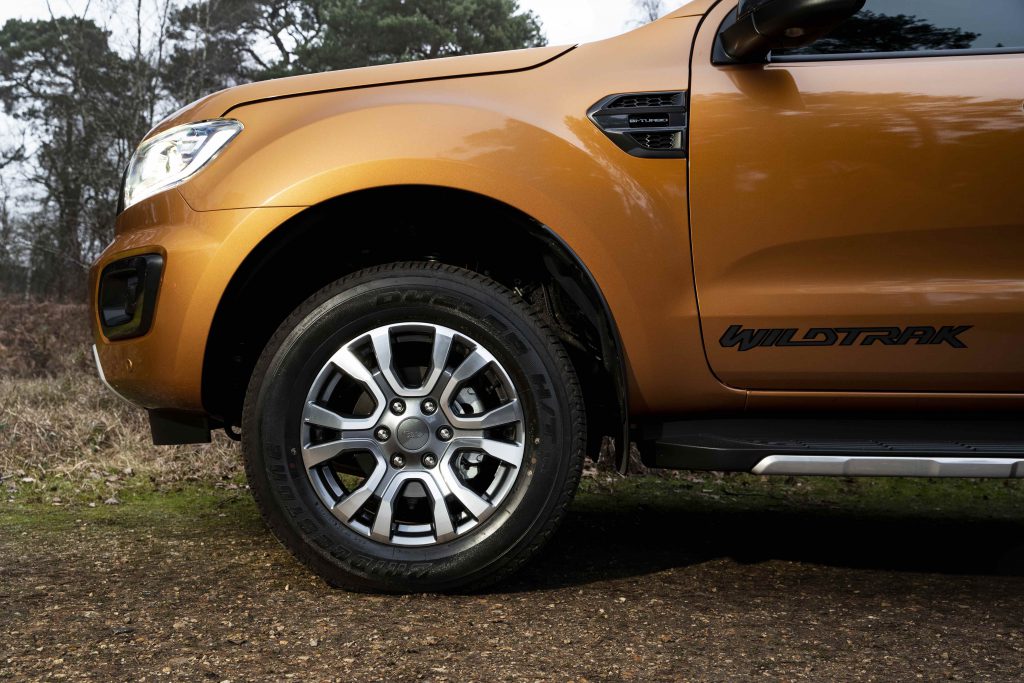


Nigel Wigmore
Main Photograph by Matt Seymour
THE big beasts of the car
jungle have been under
attack in recent years on
all fronts but mostly with
regard to their source of
power.
But then any owner of a
vehicle with a large diesel or
petrol engine should be able
to see the writing on the
wall. A ban on selling new
petrol, diesel or hybrid cars
here will be brought
forward from 2040 to 2035
at the latest, under
government plans.
Experts said 2040 would
be too late if the UK wants
to achieve its target of
emitting virtually zero
carbon by 2050.
Carmakers are already
hurrying to adapt and
change. They know that
people will not stop wanting
to buy large comfortable
cars.
So they are working hard
to change power sources to
ones that are
environmentally acceptable
but most importantly, still
appeal to new car buyers.
One of those big beasts
that has been around for a
long while but has changed
direction towards being
more eco-acceptable is the
Ford Ranger.
The Ranger was
introduced in 1983 as the
first compact pickup truck
produced by Ford. The
Ranger pick-up of today —
which came to Europe in
mid-2019 — is as you might
expect, totally equipped for
21st Century driving.
Indeed, I was able to try
the Ranger on a very modern
journey from my home in the
Cotswolds to the far eastern
side of London.
This involved motorway
driving — on the M4 and
the M25 on the outward
journey — and the
stop/start style of driving in
heavy traffic on the North
Circular and M40 motorway
on the return home.
During this trip on a
variety of roads, the Ranger
was exemplary. It was
assured in performance and
breezed along with a
comfortable human load of
four adults plus baggage.
I think that a lockable
cover for the load space
would be essential if you are
contemplating ownership of
a modern-day double cab
pick-up.
The riding position is high
and assertive and therefore
your road presence inspires
confidence.
The Ranger tackles the
power source question, says
Ford, by delivering “more
power, greater fuelefficiency” coupled with
advanced driver assistance
technologies.
At the core of this new
look Ranger is a 2.0-litre
EcoBlue diesel engine with
selective catalytic reduction
(SCR) for optimised
emissions.
It delivers up to a nine
per cent fuel-efficiency
improvement when
combined with an advanced
new 10-speed automatic
transmission.
The new Ranger engine
line-up is led by a Bi-turbo
version of the 2.0-litre
EcoBlue engine, that
delivers great torque
(pulling power) for loadhauling capability.
The Ranger is available in
Regular Cab, Super Cab,
and Double Cab body
styles, features four-wheel
drive as standard, and offers
Fo r d ’s SYNC 3 connectivity
and FordPass Connect onboard modem technology.
The 2020 version then is
almost too sophisticated
simply to be referred to as a
“pick-up” but that is where
this handsome vehicle’s
antecedents lie.
You can still use it purely
as a workhorse and very
efficient it is, too. The
double cab, now favoured
by most people who buy this
type of vehicle more for
leisure, somewhat restricts
load space.
However, what load space
remains is good for hauling
any of the larger and more
awkward loads you would
not wish to carry by car.
Make no mistake this is
the toughest of vehicles. It
can wade through water up
to 800mm deep. With
230mm of ground clearance
the new Ranger can handle
extreme terrains whether
for work or leisure.
It introduces advanced
connectivity features
including the FordPass
Connect on-board modem.
This “turns the Ranger into
a mobile Wi-Fi hotspot”
with connectivity for up to
10 Wi-Fi enabled devices.
It also enables a range of
features accessed via the
FordPass mobile app
including, Vehicle Status,
allowing the driver to
remotely monitor items
such as oil level, tyre
pressures and mileage
before setting off.
There is Vehicle Locator,
which helps drivers find
their vehicle in busy car
parks or unfamiliar work
locations.
Remote lock/unlock,
allows the driver to allow
access for colleagues, or
simply gives the driver
peace of mind knowing that
the vehicle is locked.
Further technologies
include Ford’s SYNC 3
communications and
entertainment system.
This can be operated
using voice commands, or
via pinch and swipe gestures
on an 8in touchscreen and
is compatible with Apple
CarPlay and Android Auto.
Fo r d ’s MyKey system
which allows fleet managers
to program the key to limit
driver’s speed and radio
volume, and to permanently
switch on active safety
features.
